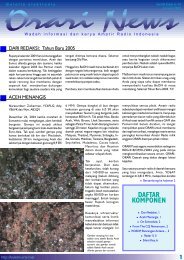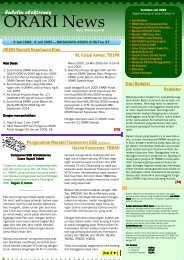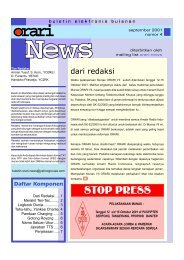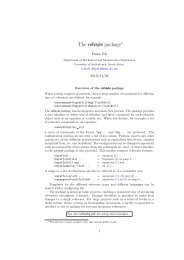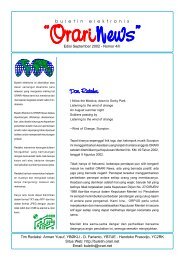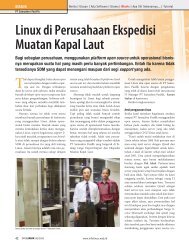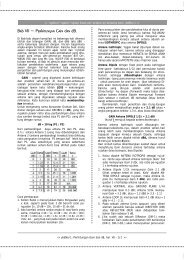You also want an ePaper? Increase the reach of your titles
YUMPU automatically turns print PDFs into web optimized ePapers that Google loves.
ferrite loaded impedance matching transformer terminated into a<br />
non-inductive resistor (typically 400 Ohms to 1K Ohms); this is then<br />
coupled to a parallel resonant circuit at the control grid. The net<br />
power gain resulting from such a circuit is somewhat less than that<br />
of a conventional high-impedance grid-tuned circuit but this circuit<br />
generally does not require neutralization, due to the swamping<br />
effect of the low grid impedance.<br />
For the 4CX20,000A example using a parallel tuned matching<br />
circuit (Fig. 27), the tube’s input resistance is approx. the power<br />
delivered to the grid of the tube divided by the square of the dc grid<br />
current.<br />
The input circuit capacitance C3, for 2 MHz operation will therefore<br />
be approx. 1250 pF. The input circuit inductance L3 will be approx.<br />
5 microhenries.<br />
A further point of interest is the magnitude of the current necessary<br />
to charge the tube’s interelectrode capacitances; these must be<br />
charged and discharged during each rf cycle. The input capacitance<br />
of the 4CX20,000A is approx. 190 pF and the output capacitance<br />
is approx. 24 pF. With these values of capacitance, the input<br />
capacitive reactance at 2 MHz is 418 Ohms, and the output<br />
reactance is about 3300 Ohms. In the 4CX20,000A example, the<br />
grid voltage swing is 420 Volts; therefore, the grid charging current<br />
will be 420/418 or about 1 Ampere. The anode voltage swing is<br />
9000 Volts; therefore, the anode charging current will be 9000/<br />
3300 or 2.72 Amperes. Current values for this tube are quite low<br />
in this case because the frequency is relatively low. Operating this<br />
tube under the same conditions at ten times this frequency (20<br />
MHz) the charging currents will be ten times the 2 MHz example.<br />
The greater the charging current the greater the tube seal heating,<br />
electrode heating, circuit losses and the greater the current in the<br />
screen bypass capacitor. At higher frequencies it is better to limit<br />
the anode voltage swing and raise the anode current to supply the<br />
same power output. This technique reduces the magnitude of the<br />
anode charging current with generally only a slight loss of anode<br />
efficiency.<br />
3.4 COMPONENT PARTS<br />
If one is to maintain good isolation of the output and input circuits,<br />
some thought must be given to the location of the component<br />
parts of the amplifier. All component parts of the grid or input<br />
circuit and any earlier stages must be kept out of the anode circuit<br />
compartment. Similarly, anode circuit parts must be kept out of the<br />
input compartment. A discussion of compartmental enclosures is<br />
53




